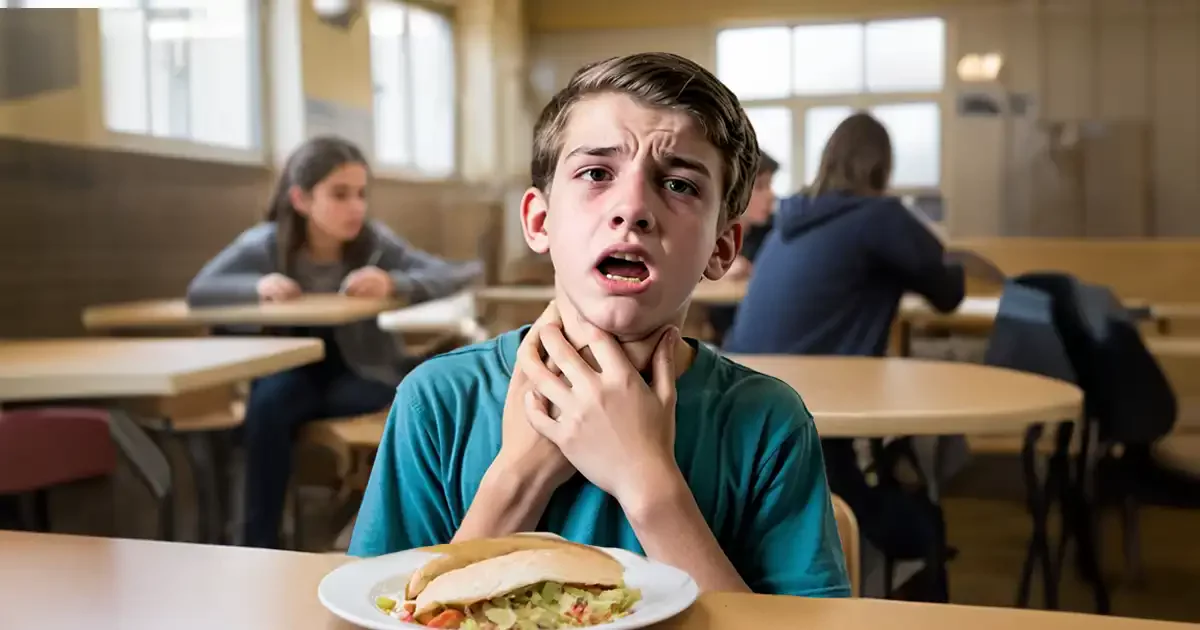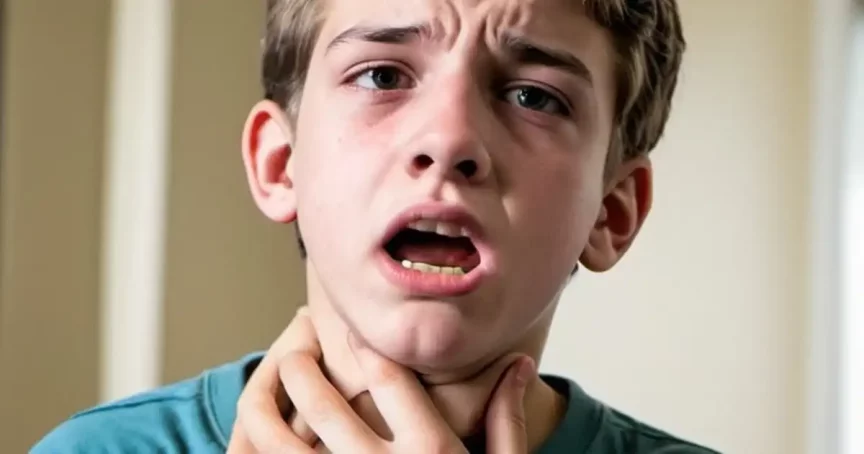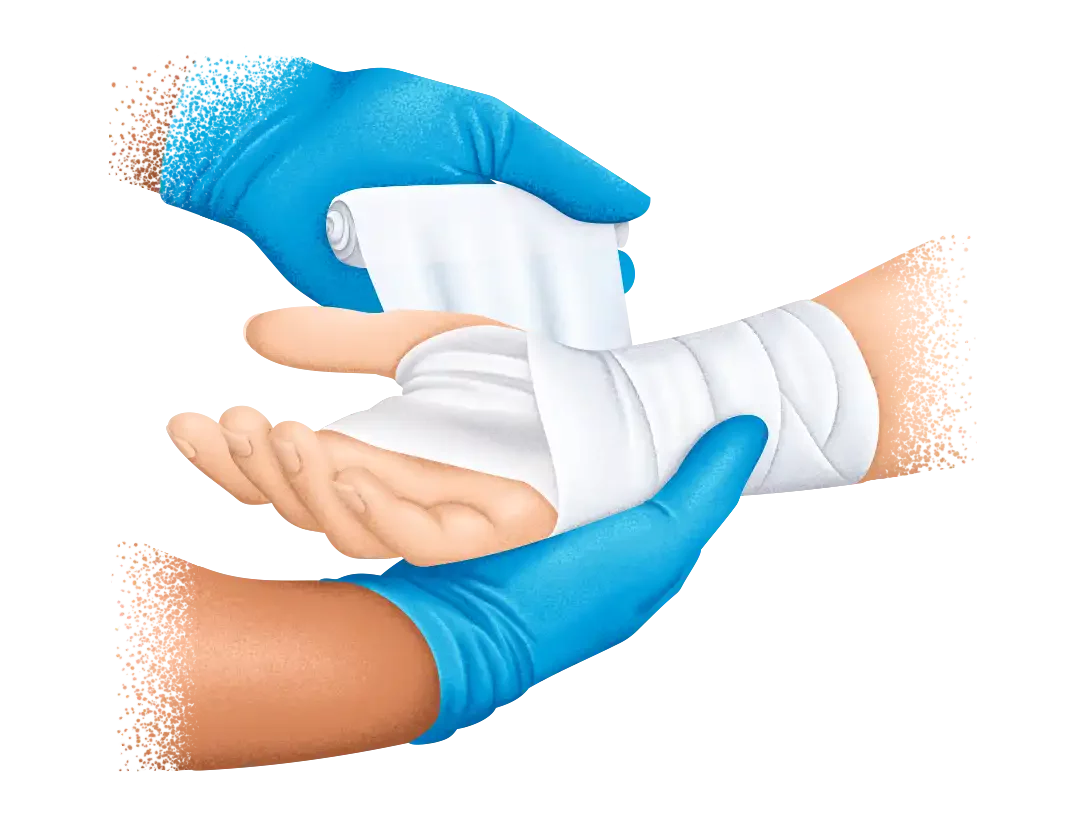august 25th, 2024
Asphyxiation in highschool
Rescuing a student at the canteen!
History
Rescuing a student at the canteen!
Léa, a 16-year-old teenager, is in secondary 5. One morning, during lunch break, she and her friends gather in the canteen to share a meal. The canteen is full of life, with students chatting and laughing as they eat. Suddenly, a panicked cry pierces the air: "Hugo is choking!"
Hugo, one of Léa's classmates, is suffocating, his eyes wide, unable to breathe. He seems to have choked on a piece of sandwich. Panicking, he got up from his chair and tried desperately to catch his breath. The students around him were frantic, not knowing what to do. Léa, who had taken first aid training the previous year, immediately realised the seriousness of the situation and decided to intervene.


Without wasting any time, Léa gets up and asks the other students to move aside so that she can do something. She approaches Hugo from behind and calmly tells him that she's going to help him. Léa positioned herself correctly and performed the Heimlich method: she placed her arms around Hugo's waist, clenched her fists and exerted a series of rapid upward pressures just below the ribcage.
After a few seemingly endless seconds, the piece of sandwich is forced out of Hugo's throat. He immediately regained his breath, coughed and began to breathe normally. Relieved and grateful, he whispered a tearful "thank you" to Léa.
The teachers and canteen staff arrived quickly after the incident. They congratulate Léa on her composure and efficiency. Hugo is taken to the infirmary for further examination, but is out of danger thanks to Léa's rapid intervention.
In resume
The dramatic incident that almost cost Hugo his life shows us the crucial importance of rapid and appropriate intervention in the event of asphyxiation. Léa's immediate reaction and first aid skills were decisive in saving her friend's life. This episode highlights the importance of knowing and following a specific protocol in the event of an emergency, as we will now examine in detail.
In this section, we will review the key steps in an effective asphyxiation response protocol. By understanding these steps and putting them into practice, we can be better prepared to react quickly and correctly in the event of a similar emergency. So let's learn together the essential steps to take to provide optimum assistance in such situations.

PROTOCOLE OF INTERVENTION
Asphyxiation
By understanding the key steps in the protocol and putting them into practice, we can be better prepared to react quickly and correctly in the event of a similar emergency. So let's learn together the essential steps to take to provide optimum assistance in such situations.
1) EVALUATING THE SITUATION
Check that the victim can speak, cough or breathe.
If the victim cannot breathe or speak, this is an emergency.
2) PERFORMING THE HEIMLICH MANOEUVRE
Place your arms around the victim's waist.
Make a fist with one hand and place the thumb against the abdomen, just above the navel.
Grasp the fist with your other hand and apply a series of rapid upward pressures.
3) WATCH THE VICTIM
Sip water to avoid dehydration.
Avoid alcoholic or caffeinated drinks, which can aggravate dehydration.
4) CALL FOR HELP
Ask someone to call the emergency services as soon as possible.
Continue compressions and CPR until help arrives.
5) ADDITIONAL CARE
After expelling the object, monitor the victim for any signs of respiratory distress.
Encourage the victim to consult a doctor to ensure that there are no further complications.
Importance of training
This fictional situation shows us that real knowledge in terms of first aid is essential during life-threatening events. Rapid and appropriate intervention can also significantly promote healing and recovery from a serious injury. Mastering the knowledge of a complete first aid course can be useful in many critical situations, and even in accidental everyday care.
Conclusion
Léa's story and the swift action she took to save Hugo highlight the vital importance of first aid knowledge. In an emergency situation, every gesture counts, and appropriate intervention can make all the difference to the victim's survival and well-being. By understanding and following a specific protocol, we can be better prepared to react effectively in an emergency, such as asphyxia.
This knowledge can not only save lives, but also reduce the risk of serious complications. Let's all be aware of the importance of first aid and be ready to act when the situation calls for it, because each and every one of us can be a hero in an emergency situation.
Let's learn, practice and share these skills to create a safer environment for everyone.
Written by Alexandre Grenier, Founder of Académie Saint-Bernard
Layout and revised by Roxanne Duchesneau, Graphic Designer
